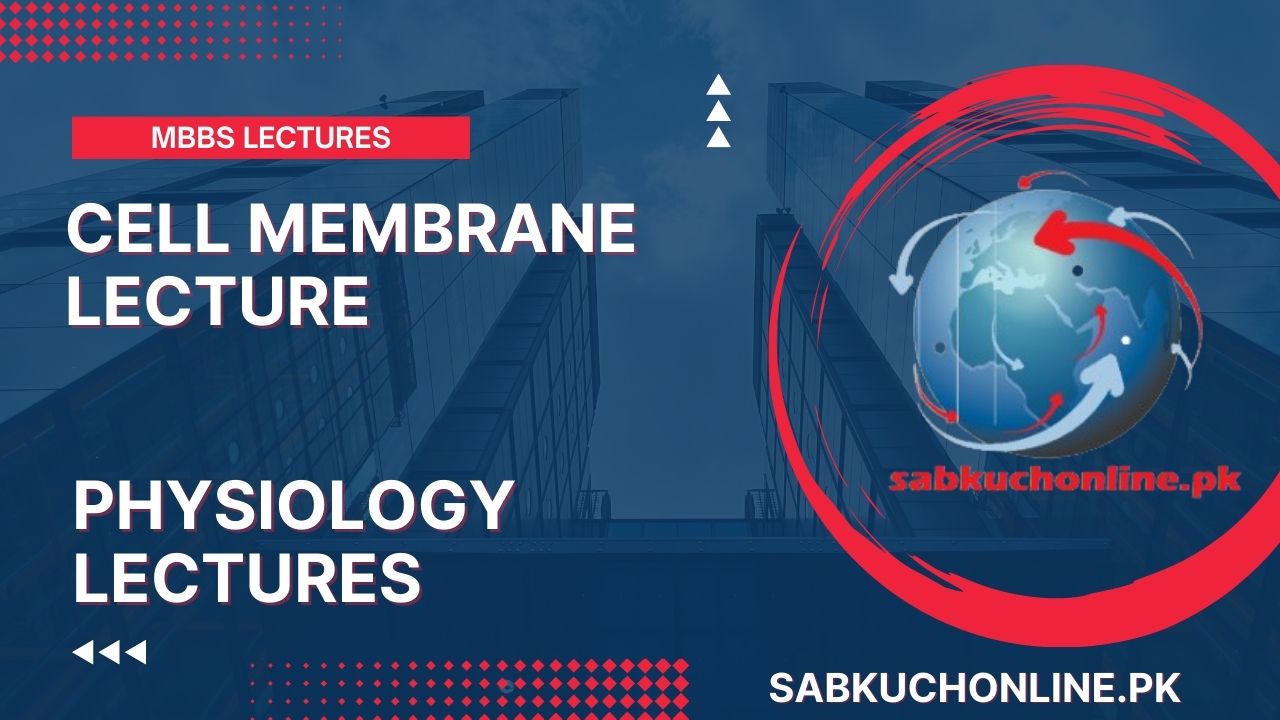Learning objectives
By the end of lecture the student be able to
•Comprehend the structural composition of cell membrane structure
•Explain Fluid mosaic model
•Summarize the cell membrane functions
CELL
•Smallest, basic, living structural and functional unit of the body
•Discovered by Robert Hook in mid 1600s
•Appeared as row of empty boxes
•Reproduce from pre existing cells
•Mitosis and meiosis
•Most important constituent to carry out life processes
Cell Structure
•3-Dimensional structure
•Size ~ 10-20 μm
•Number ~ 100 trillion (human)
•Types ~ >200

COMPOSITION
Composed of protoplasm
•Water
•Electrolytes
•Proteins
•Carbohydrates
•Lipids
Structure
Structurally it is divided into
1.Cell membrane
•That encloses it and separates from ECF
2.Nucleus
•That controls all the activities of cell
3.Cytoplasm
•Contain cytosol and cell organelles
Prokaryotic cell
1.First type
2.Central nucloeidregion
3.No membrane bounded organelles
4.Bacteria, ameoba

Eukaryotic cell
1.Modified type
2.Possess many organelles
3.Membrane bounded structures
4.Central membrane bounded nucleus
5.Fungi, animal and plant cell

CELL ORGANELLES
MEMBRANE BOUNDED ORGANELLES
•Endoplasmic reticulum
•Golgi apparatus
•Mitochondria
•Nucleus
•Vaults
•Lysosomes
•Peroxisomes
CELL ORGANELLES
NON-MEMBRANE BOUNDED ORGANELLES
•Ribosomes
•Chromosomes
•Cytoskeleton
•Nucleolus
•Centrioles

CELL MEMBRANE
•Other names: plasma membrane, plasmalemma
•It is a thin, pliable boundary that separates cell from the ECF and envelopes cell organelles
•Exhibits selective permeability
Composed of
1.Lipids (55%)
2.Proteins (42%)
3.Carbohydrates (3%)
Structure
Basic structure is
•Lipid bilayer (double lipid layer)
•Proteins are embedded in this lipid bilayer structure
•Carbohydrates are attached to lipid and proteins



CELL MEMBRANE
Membrane Lipids
1.Phospholipids
•Basic constituent of cell membrane
•75%
•forms lipid bilayer
2.Cholesterol
•Contributes in membrane fluidity, stability and permeability
3.Glycolipids
CELL MEMBRANE
•Lipid bilayer is primarily composed of phospholipid molecules
•Amphipathic molecules
•Hydrophillicend
•Hydrophobic end

FLUID MOSAIC MODEL
•Cell membrane is not a stiff or a rigid structure
•Fluid like structure
•Keep on changing
•Proteins floats in it
PROTEINS
1.Peripheral protein
•Bounded to the surface of cell membrane
2.Integral protein
•Part of lipid bilayer and are penetrated in hydrophobic core
•Spans throughout membrane
•Transmembrane protein
Functions of INTEGRAL PROTEIN
•Transport
•Enzymatic activity
•Intracellular junction
•Attachment to cytoskeleton and extracellular matrix —–RECEPTORS
Functions of PERIPHERAL PROTEIN
•Enzymes
MEMBRANE CARBOHYDRATES
•Present as glycolipids and glycoproteins
•Forms glycocalxaround the cell which functions as
cell identity marker
The “cell signature”
Role in immune system
GENERAL FUNCTIONS
•Protection
•Selective permeability
•Maintenance of ionic balance between ECF and ICF
•Absorptive function
•Exchange of gases
•Maintenance of size and shape of cell
•Excretory function
FUNCTION OF PROTEINS
•Transport function
Channel protein: simple diffusion(aquaporins)
Carrier protein: Facilitated diffusion and active transport
•Receptor protein enzymes
•Cell to cell adhesions (ICAMs): integrinsand cadherins
FUNCTION OF PROTEINS (contd)
•Structural protein
•Immune system: cell identity marker (glycoproteins)
FUNCTION OF CARBOHYDRATES/GLYCOCALYX
•Repulsion of negatively charged substances
•Cell to cell linkage
•Receptors
•Immune system
Identity marker (glycoproteins)
•Cell growth regulation
